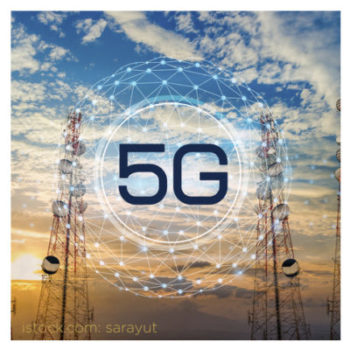Some have questioned the energy usage of 5G technology. It turns out 5G is energy efficient, according to the Ericsson Mobile Report. The study did not find a strong link between growing data use and increased energy usage on mobile networks. Spectral efficiency for 5G grew by 200 percent compared to 4G due to modulation improvements and scale effects of increased bandwidths.
“Major technological innovations have enabled mobile networks to support significantly more traffic while consuming only marginally more energy,” the Report said. “Through 5G standards and specification, new innovations are being deployed to not only continue supporting growing data demands, but to help drive down energy consumption.”
How 5G cuts energy usage involves putting radio components into sleep mode during the short gaps that occur in data transmissions, even during highly loaded times, and activating them again before the next transmission. Think of it as a “power” nap.
“[5G NR’s] ultra-lean design creates new possibilities for drastically decreasing network energy consumption compared to previous generations, and the ability for deeper and longer periods of sleep results in the potential to significantly reduce the energy consumption,” the Report said.
To further reduce energy use, the report encouraged carriers to use a holistic approach of implementing energy-saving software, planning the network with precision and operating the site infrastructure intelligently.
Indosat Ooredoo in Indonesia reduced power consumption by introducing sleep-mode software in a residential 4G cluster of 68 macro sites. It also conducted site selection studies based on AI analytics of real traffic usage and user behavior to optimize network deployment across 3,000 sites, which reduced energy consumption.
“AI enables a more precise cost–performance analysis to prioritize the sites that most urgently need capacity enhancements,” the Report said. “However, it is not only site-level decisions that are considered, but also how to deploy 5G in clusters to achieve better network optimization and tuning across the whole network.”
To build 5G with precision, a carrier needs to access a wide range of equipment to cover different deployment scenarios, according to the Report. For example, it refers to the use of the latest Massive MIMO radios, which are smaller and can reduce energy consumption between 43 percent and 55 percent.
On top of the energy-efficient RAN technology and techniques, the report discusses introducing renewable energy to mobile network sites. For example, Deutsche Telekom installed 39 square meter solar panels to a mobile site in Dittenheim, Germany during the second half of 2020, which contributed an average of 14 percent to the site’s overall power supply.
“A combination of switching to renewables, modernizing equipment and fully utilizing the energy-saving capabilities of today’s mobile networks can immediately make a positive difference, contributing significantly towards service providers’ net-zero emissions targets,” the Report said.
By J. Sharpe Smith Inside Towers Technology Editor





Reader Interactions